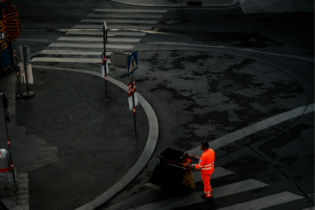Government will contribute R844 billion of the R1.3 trillion needed for the presidential infrastructure projects over the next three years, it was confirmed on Friday.
Several infrastructure projects have been identified by the Presidential Infrastructure Coordinating Commission (PICC). They range from transport, rail to energy, with some already underway, such as the Port of Ngqura in the Eastern Cape, the Lephalale power station in Limpopo, and the Dube Trade Port in Durban. Speaking to SAnews on the sidelines of the Presidential Infrastructure Investment Conference in Johannesburg, Director General in the Presidency Cassius Lubisi urged CEOs in parastatals, directors general and chief financial officers to “embrace” the plan and make it their own. “DGs, CFOs and CEOs are the accounting officers and the key implementing agents… so clearly these are the people we require to fast track the way in which decision making occurs in regard to infrastructure building, otherwise we won’t go as fast as we wish to,” Lubisi said. He said departments would be required to beef up their procurement in order to ensure that the state received value for tax payers’ money and that projects were carried out at the “right price”. President Jacob Zuma, who earlier opened the conference at the Sandton Convention Centre, told attending investors that infrastructure development was a catalyst to sustainable economic development, urging them to invest in the state-led build programme. The plan, announced by government in February, is expected to guide the construction of new infrastructure, while speeding up current projects that support economic growth.It proposes 18 Strategic Integrated Projects (SIPs), covering more than 150 specific infrastructure interventions. These cover all the key platforms in rail, road and ports, dams, irrigation systems, sanitation as well as energy.
Economic Development Minister Ebrahim Patel told reporters on Friday that government was committed in mobilising public funds to speed up the progamme, but pointed out that the private sector would have to play its role. “Construction needs money, it needs minds… so there has to be co-investment; we have to ensure there is coordination between private sector investment and public sector investment.” Patel said the infrastructure programme provided long term opportunities for both the state and the private sector. “Investors clearly do want to be part of these opportunities and so if you look at the long term demand, including commodity demand over the next 15 to 20 years… what government is doing now in the short term will help create a conducive environment for investment in the long term.” Public Enterprise Minister MalusiGigagaba described the infrastructure plan as well-considered, long term planning by government, and gave the assurance to investors and business about the country’s future of infrastructure capacity. “From here, we will be able to tell you how many kilometres of transmission lines would have been constructed by 2020, how many megawatts of electricity capacity would be available by 2020 and we can tell you how many locomotives either in freight or passenger rail, and that goes across the various areas of infrastructure spend.” Source: SAnews.gov






